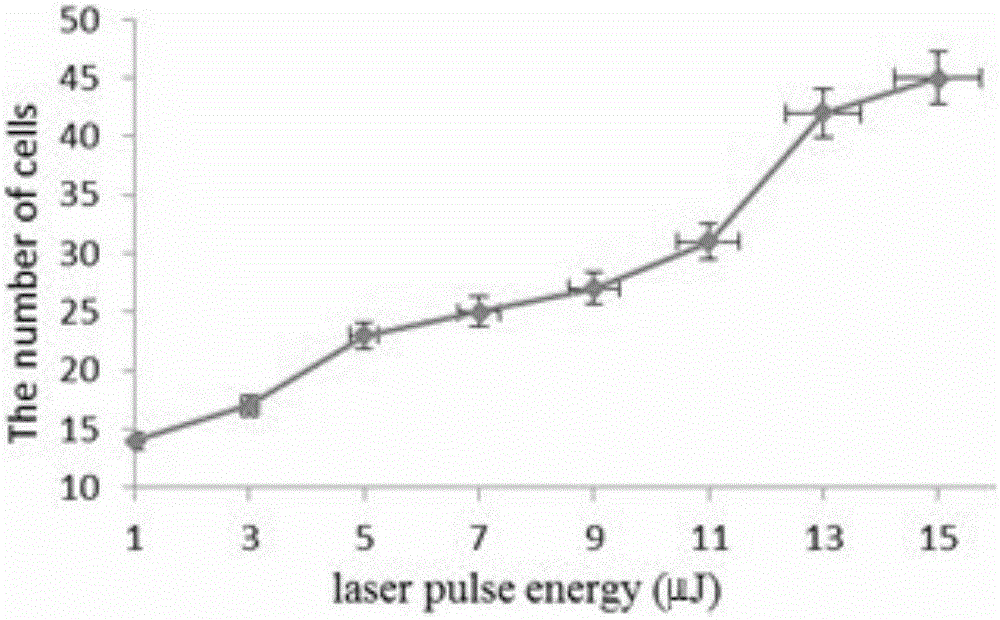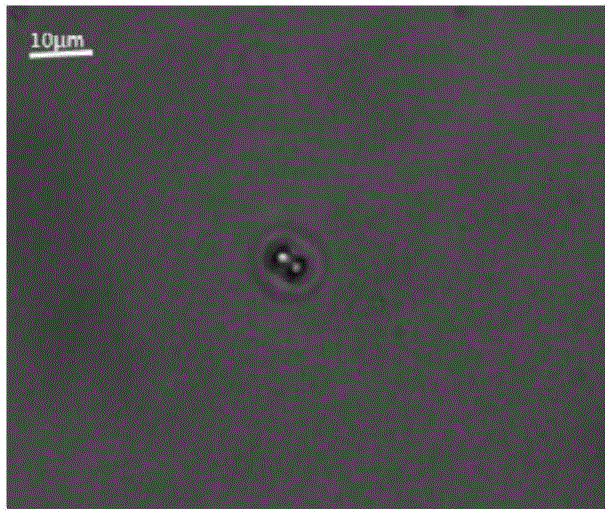Method for isolating single cells
A single cell and cell technology, applied in the field of single cell separation, can solve the problems of easy inactivation of cells and low separation efficiency, and achieve the effect of improving separation accuracy, improving separation efficiency and maintaining activity.
- Summary
- Abstract
- Description
- Claims
- Application Information
AI Technical Summary
Problems solved by technology
Method used
Image
Examples
Embodiment 1
[0046] In this embodiment, yeast cells are taken as an example, and the specific steps for single cell isolation are as follows:
[0047] 1. Put the experimental equipment into a high-pressure steam sterilizer, and sterilize in high-pressure steam at 121°C for 20 minutes.
[0048] 2. When yeast cells grow in cell culture medium, the position of the cells is not fixed, which easily affects the separation accuracy of single cells. For this reason, in this experiment, 5% polylysine (PLL) was used to treat one side of the photolysis material layer, so that the yeast cells could not swim freely.
[0049] 3. Coat the surface of the photolytic material layer with a thickness of about 40 μm and a cell density of 3×10 by scraping coating technology. 6 cells / mL of cell culture medium, and then placed at 37°C, 5% CO 2 Stand still in the cell incubator for 30 minutes, so that the yeast cells land and fix on the surface of the photolysis material layer.
[0050] 4. Use a 532nm nanosecon...
PUM
 Login to View More
Login to View More Abstract
Description
Claims
Application Information
 Login to View More
Login to View More - R&D
- Intellectual Property
- Life Sciences
- Materials
- Tech Scout
- Unparalleled Data Quality
- Higher Quality Content
- 60% Fewer Hallucinations
Browse by: Latest US Patents, China's latest patents, Technical Efficacy Thesaurus, Application Domain, Technology Topic, Popular Technical Reports.
© 2025 PatSnap. All rights reserved.Legal|Privacy policy|Modern Slavery Act Transparency Statement|Sitemap|About US| Contact US: help@patsnap.com



